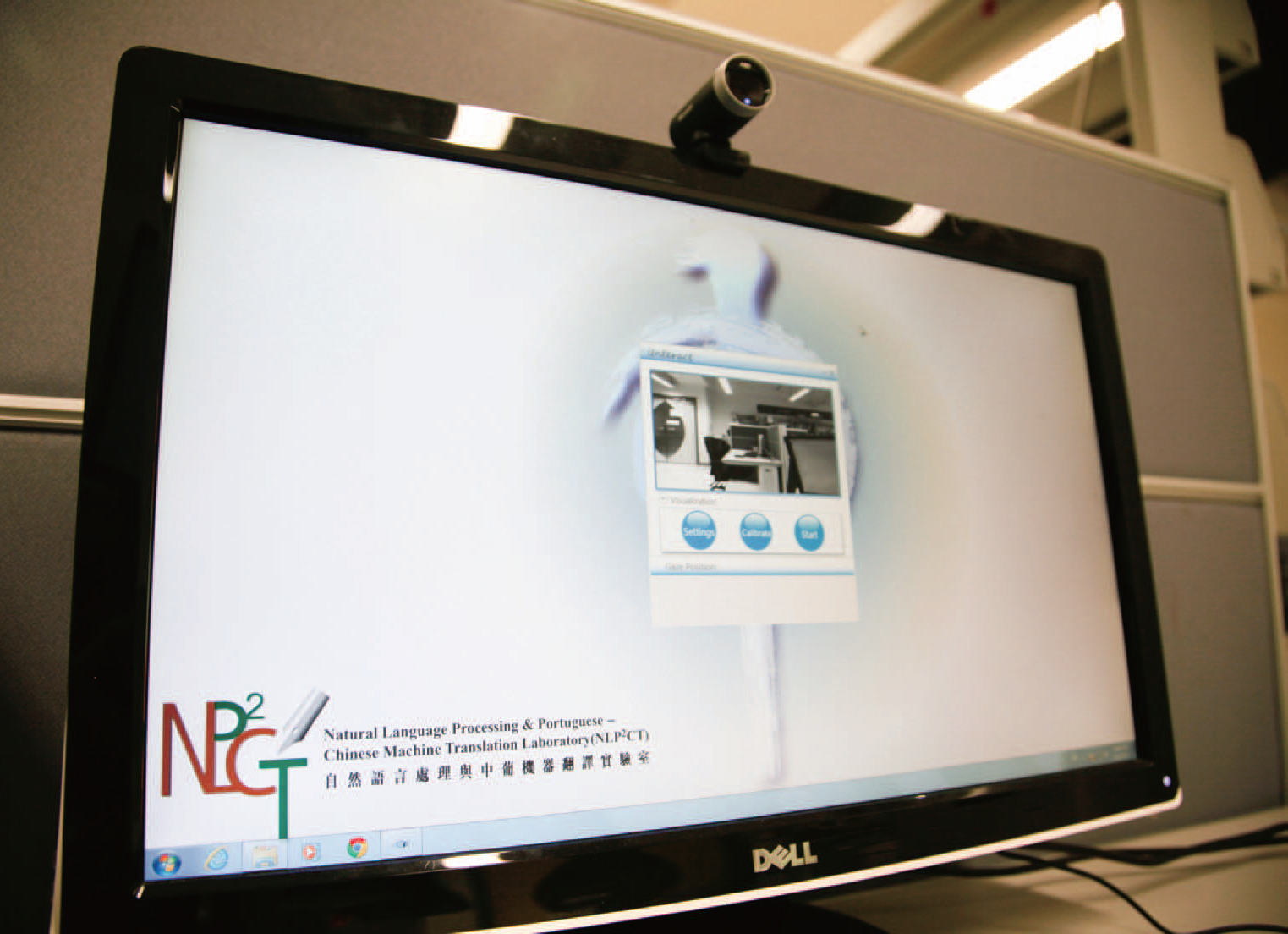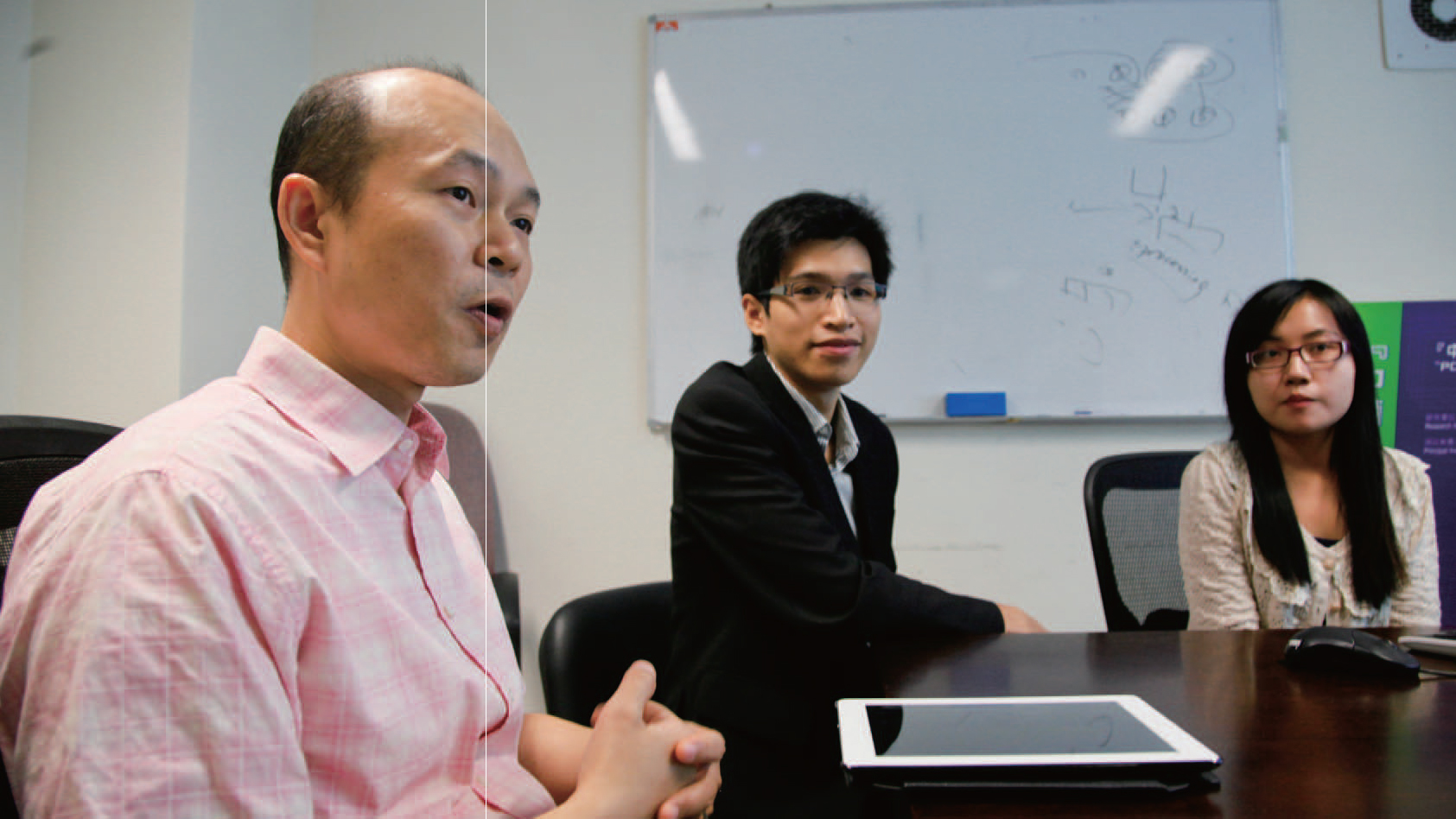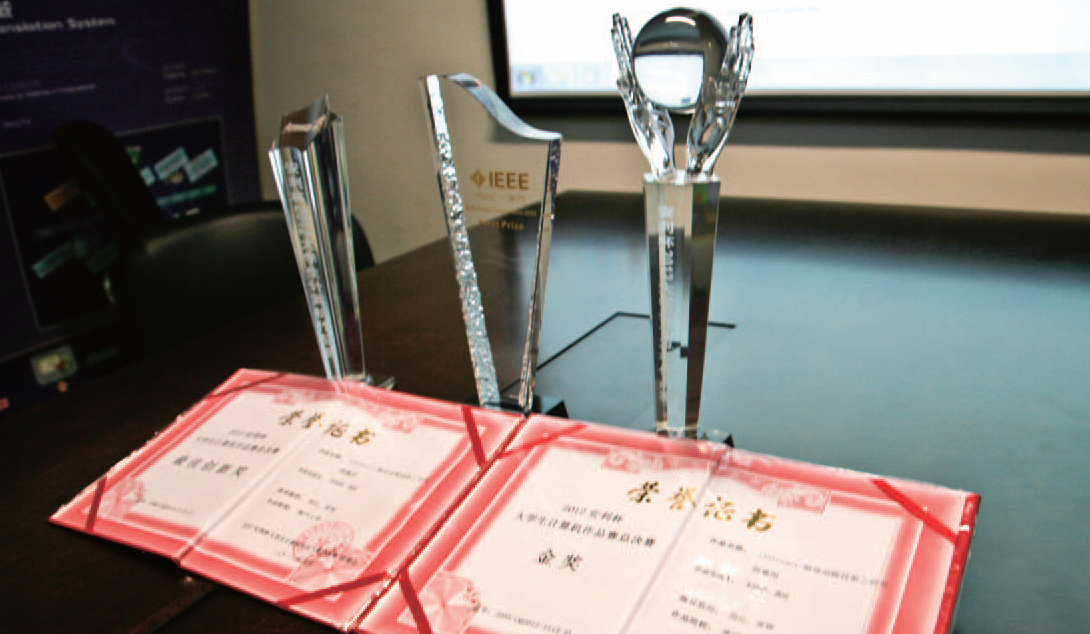Stephen Hawking, the renowned British physicist and cosmologist, couldn’t move or speak because of motor neuron disease, but with the help of an infrared sensor that detects his facial movements, he has given many mind-blowing lectures to the general public. As Hawking’s ability to control his facial movements continues to decline, scientists are investigating more motion-sensing technologies, including eye tracking technology. While eye tracking devices can help those with disabilities to interact and communicate with the world, the high price keeps the technology out of reach of ordinary people. “How to use this technology to benefit more people in need?” was the question that motivated Lei I Kei (Wendy) and Wong Wong (Jacky), two graduates of the Department of Computer and Information Science, Faculty of Science and Technology (FST), University of Macau (UM), to spend two years developing iINTERACT, a low-cost, easy-to-use eye tracking system.
Enormous Potential of iINTERACT
What sets iINTERACT apart from traditional eye tracking devices, which are usually expensive and bulky, is that it’s ready for use after being installed in a computer or mobile phone mounted with a conventional digital video camera. Wendy explains that by analysing and displaying eye movement in the form of gaze plots and heat maps, the system enables the user to control the mouse or keyboard with his or her eyes, thus communicating with the world and performing various activities like sending email, surfing the Internet, processing files and playing computer games.
While iINTERACT has enormous potential in terms of applications in business, engineering and military realms, Dr. Wong Fai and Dr. Chao Sam, supervisors of Wendy and Jacky, say the system still has room for technical improvement. “For example, if the user’s eyes move too fast, the system might not be able to keep up. To increase tracking speed, you need to use the least number of algorithms, but to improve precision, you need to give the system more parameters. So we hope to achieve an optimum balance between speed and precision and develop a more flexible system, so it can become popularised and better the lives of more people,” says Dr. Wong.
The Early Bird Catches the Worm
UM encourages undergraduate students to carry out advanced research and provides generous support in this area. The idea of iINTERACT was born during Wendy and Jacky’s participation in a summer research programme under the supervision of Dr. Wong where they grew increasingly interested in scientific research because of the rich academic atmosphere—so interested, in fact, that they began to wonder if they could undertake a project based on their idea. After learning Wendy and Jacky were doing research on eye tracking, Dr. Wong committed his full support although he foresaw they would encounter numerous difficulties. He was right. Over and over again, Wendy and Jacky got stuck. Over and over again, Dr. Wong cheered them on and guided them to achieving one breakthrough after another. Their efforts bore fruit in the end, in the form of iINTERACT as well as a close bond that formed between them. Now Wendy and Jacky have graduated, but they often visit Dr. Wong after work to consult his opinions on research-related issues.
“We started preparing in our sophomore year, and we spent over two years developing the system,” recalls Jacky. “We spent the first year poring over technical literature, and during the second year we tried various methods to write the programme. We encountered many problems that kept us awake at nights, but we overcame them one by one. It was hard, but it was very fulfilling, and our efforts paid off in the end.” Jacky pauses before he adds, “This project was risky in that we didn’t know if we could succeed. But I guess with research, you just have to be prepared to fail and try again and again.” Jacky says even with the relatively trivial technical detail like the setup of the camera, they failed many times—they broke several cameras trying different methods, like a head-mounted camera and glasses camera, before finally deciding on the current computer-mounted camera. Wendy recalls the unforgettable experience of participating in a competition. “I remember going to Chongqing for a competition and feeling a bit nervous, and then a local student said to me, ‘You’ve got some really cool ideas!’ That made me a lot more relaxed and I even looked forward to facing the judges’ questions,” says Wendy. “Every competition is an opportunity to gain some experience, and in preparing for these competitions, I would seek my supervisor’s advice on how to improve my speaking skills as well as the technical and functional aspects of the project, to make everything as perfect as possible before presenting the project to the judges.”
The fact that Wendy and Jacky successfully developed the iINTERACT system before graduation, when most of their fellow students were just beginning to consider the subject of their research, made them the envy of their peers. But even Wendy and Jacky didn’t expect the project to bring them so many honours, including the Dean’s Final Year Project List Award, a first prize at the IEEE (Institute of Electrical and Electronics Engineers) Project Competition 2012, the Gold and Creativity Prizes: Amway Cup 2012 University IT Project Competition, a Merit Award: Macau ICT Awards, and a Merit Award (Category: Tertiary Student Project) at the Asia Pacific Information and Communications Technology Awards 2012.
Dr. Wong is happy for Wendy and Jacky. He says, “Eye tracking is a new area of research, which involves various technologies, so it’s very difficult for undergraduate students. But they managed to constantly discover new knowledge in the process, which was hard but also rewarding.”
The beauty of scientific research is that it enriches life and opens up endless possibilities. We look forward to the day when the iINTERACT system fulfils the purpose that prompted Wendy and Jacky to develop it in the first place—to benefit more people in need.



